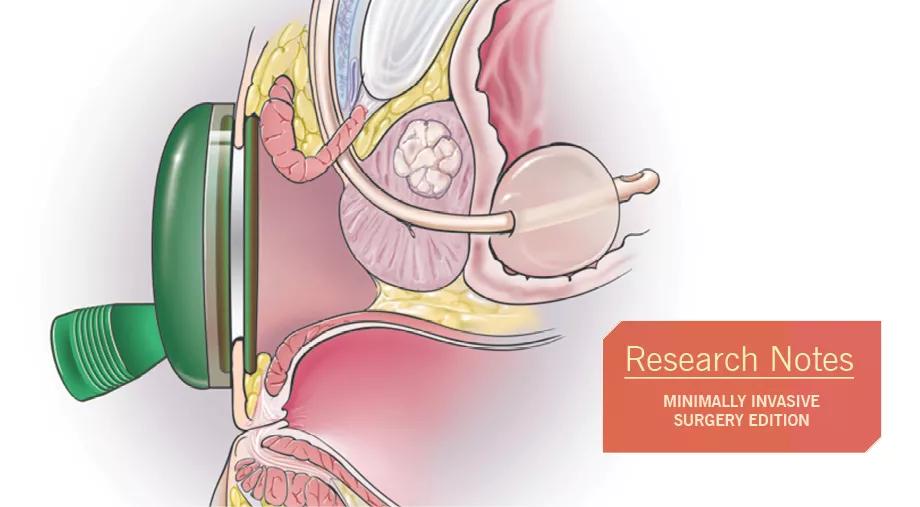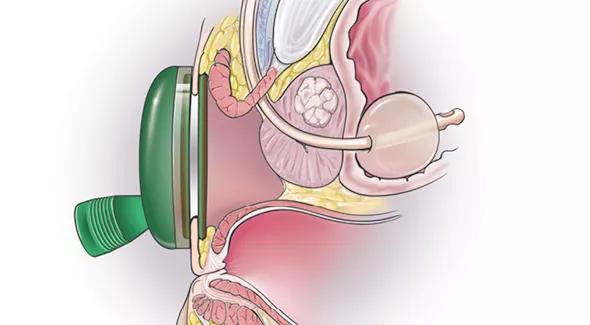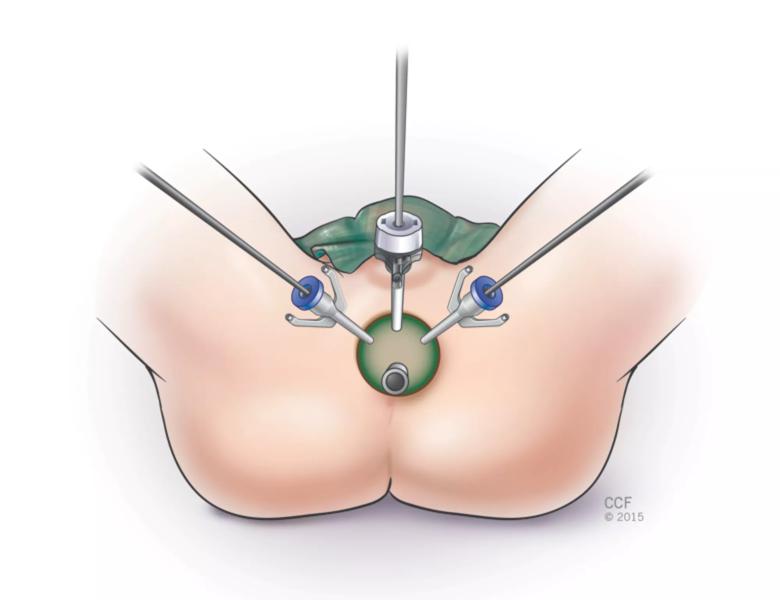Procedure’s development and evolution at Cleveland Clinic

Cleveland Clinic is a non-profit academic medical center. Advertising on our site helps support our mission. We do not endorse non-Cleveland Clinic products or services. Policy

From its introduction in 1905 until the mid-1970s, open radical perineal prostatectomy (RPP) was the predominant surgical approach for localized prostate cancer. Though RPP provides the most direct access to the prostate, it is a technically and ergonomically challenging procedure due to the deep, narrow confines of the perineal anatomy.
With the refinement of the retropubic approach to radical prostatectomy (RRP) and the application of cavernous nerve-sparing methods in the 1980s, and the later development of laparoscopic and robot-assisted retropubic procedures, the perineal approach has been largely abandoned.
This preference for the retropubic technique seems to be based more on surgeon habits, familiarity and training experience than on evidence-based medicine. While open RRP is less anatomically complex, there are no randomized studies to date that show its definitive superiority over RPP in terms of cancer control and continence rates. Reported advantages of the perineal approach include shorter operative time and hospital stay, lower cost for patients who do not require bilateral pelvic lymph node dissection, and lower blood loss and transfusion rates.
The robotic platform has enhanced the ability to perform dissection and reconstruction in confined anatomical spaces. The Center for Robotic and Laparoscopic Surgery in Cleveland Clinic’s Glickman Urological & Kidney Institute has considerable expertise in complex robotic procedures and has pioneered the use of single-site robotic urologic surgery. We hypothesized that the robot platform could help overcome the anatomic challenges of the perineal approach to radical prostatectomy and potentially benefit patients. We decided to test our hypothesis with a proof-of-concept study of robot-assisted radical perineal prostatectomy (RRPP) using a cadaver model.
Our previous experience and understanding of the limitations of single-site surgery was instrumental to the development our RRPP technique, but we still encountered challenges that required many hours of experimentation, troubleshooting and adjustment. Those challenges included patient positioning, robot docking, port selection and placement, incision size, initial dissection steps and the identification of anatomical landmarks through the robot’s viewing scope. We worked through these issues by performing RRPP in five male cadavers. We recently described our initial experience in the Journal of Endourology.
We utilized the da Vinci Si™ system in a three-arm configuration. A 12- mm trocar (robotic scope), a 10-mm trocar (assistant) and two 8-mm trocars were inserted through a GelSeal™ Cap in a diamond-shape configuration, with the 12-mm trocar at the bottom and the 10-mm trocar at the top. The cadaver was placed in the lithotomy position in steep Trendelenburg.
After initial investigation in the first cadaveric model, we concluded that single-port placement and the CO2 insufflation step should follow central tendon division and external sphincter muscle retraction using the Belt approach. This step minimized the chance of rectal injury, and insufflation assisted in keeping the rectum away from the operative field (Figure 1).

Figure 1. Schematic drawing illustrating sagittal view of the placement of single port device after initial dissection.
The limitations of single-site surgery using the existing robotic platform needed to be further addressed. Some technical disadvantages included “sword fighting” among instruments within the operative field and clashes between bulky robotic arms deployed into the single-site port externally.
To overcome these issues, we placed the camera port in a more anterior position with a 30-degree up optic, while the robotic trocars were placed posterolaterally and the assistant port was placed at the six o’clock position. (Figure 2). The robot was brought over the cadaver’s head and docked. This arrangement allowed for optimal spacing of the ports, minimizing internal and external clashes while allowing space for assistant to introduce instruments for suction and vascular control.

Figure 2. Schematic drawing illustrating instruments’ location in the single port.
After docking and division of the rectourethralis muscle, the posterior aspect of the Denonvilliers fascia was incised and the posterior plane of the prostate, vas deferens, and seminal vesicles were dissected. The prostatic pedicles were controlled, followed by prostatic apical dissection and the transection of the urethra. The anterior and lateral planes of the prostate were dissected, followed by bladder neck junction identification and complete excision of the prostate. After creation of vesicourethral anastomosis, the robot was undocked and the single-port device was removed.
In the first three cadavers reported, we successfully completed nerve-sparing RRPP with no injuries to surrounding structures. Median total operative time was 89 minutes. We were satisfied that we had resolved all procedural and technical issues and that the procedure was feasible.
Potential clinical advantages included the elimination of the three initial steps typically performed in the robot-assisted laparoscopic retropubic approach (bladder mobilization, endopelvic fascia opening and dorsal vein complex control), which theoretically could result in reduced operative time and blood loss. As a completely extraperitoneal approach, RRPP virtually eliminates risks of injury to the small bowel or major vessels during trocar placement, which, although rare, can be catastrophic. It also avoids having to deal with extensive adhesions in patients with previous abdominal surgeries. Although RRPP uses CO2 insufflation to improve visualization, it eliminates the need for pneumoperitoneum and its possible complications, particularly in obese patients.
While the cadaver model provided an optimal evaluation of multiple aspects of RRPP, the absence of bleeding limited our ability to fully assess the procedure. We obtained Institutional Review Board approval to evaluate RRPP in human patients. For these early procedures, we selected patients diagnosed with localized prostate cancer and a risk for lymph node positivity of no more than 4 percent. Because of uncertainty regarding the efficacy of nerve-sparing in the cadaver model, we decided out of caution to restrict our initial patients to those who were non-potent.
To date we have performed four RRPPs in this group – to our knowledge, the first documented use of a robot-assisted perineal approach for radical prostatectomy. All procedures were successfully completed, with no major complications. All patients were discharged within 12 hours of surgery and required minimal pain control measures. Of note, two of these patients previously had undergone extensive intra-abdominal surgeries, which posed significant challenges for a retropubic approach and made RRPP an ideal alternative.
We believe we have established the safety and reproducibility of RRPP in human patients. The use of a purpose-built robotic system for single-site surgery should further enhance the RRPP technique.
Our future efforts will involve continuing to assess the efficacy and clinical feasibility of RRPP, including evaluating the preservation of nerve function and the ability to perform bilateral pelvic lymph node dissection robotically through the single incision. Postoperative studies also will be needed to compare RRPP results to those of standard techniques.
Dr. Kaouk is Director of Cleveland Clinic Glickman Urological & Kidney Institute’s Center for Robotic and Laparoscopic Surgery and is the Urological & Kidney Institute’s Vice Chair for Surgical Innovations. He is a Professor of Surgery at Cleveland Clinic Lerner College of Medicine.
A Cleveland Clinic video of robot-assisted radical perineal prostatectomy received honorable mention in the video awards competition at the American Urological Association’s 2015 Annual Meeting. The AUA’s Urologic Video Education Committee selected the video as the best in the Robotics – Prostate/Novel Imaging category.

An underdiagnosed condition in patients with cancer

Study demonstrates superior visualization of occult primary lesions

New device offers greater tumor control for malignant liver lesions

Cleveland Clinic researchers discover what drives – and what may halt – virus-induced cancer

First-ever U.S. population-level retrospective analysis reveals many patients with systemic mastocytosis need faster intervention

New program provides prehabilitation and rehabilitation services to help patients with cancer maintain and regain function

First-of-its-kind research investigates the viability of standard screening to reduce the burden of late-stage cancer diagnoses

Global R&D efforts expanding first-line and relapse therapy options for patients